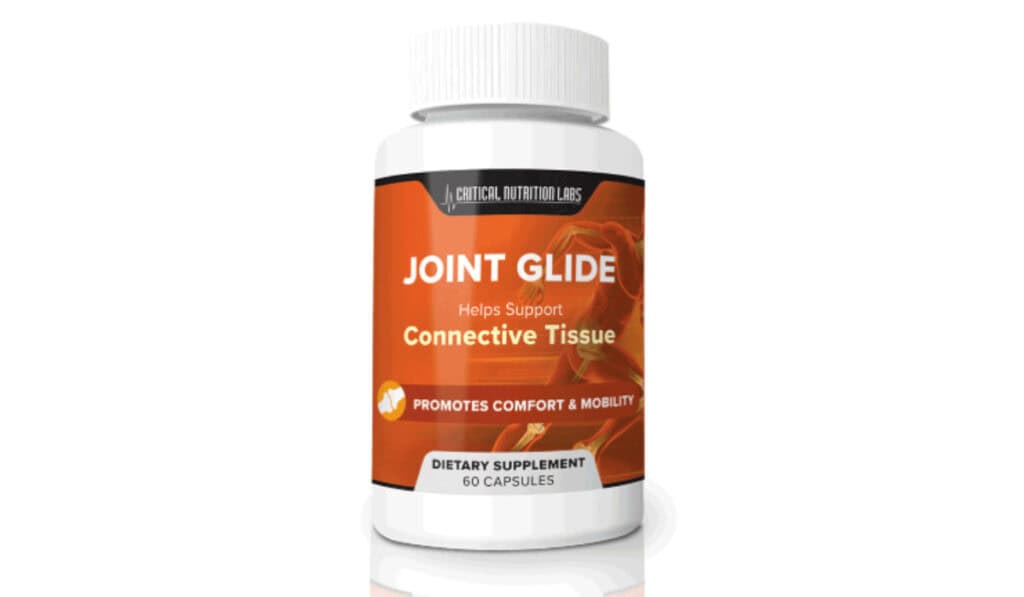Unveiling Effective Strategies
When it comes to managing joint inflammation, exploring mind-body practices can offer a refreshing perspective beyond traditional medical treatments. These techniques focus not only on the physical aspect of pain but also on the mental and emotional sides, which can significantly influence your body’s response to inflammation. For instance, incorporating relaxation techniques like progressive muscle relaxation has shown beneficial effects in managing conditions such as irritable bowel syndrome and neck pain.
Mind-body practices work by engaging the body’s natural healing abilities. Methods such as meditation and mindfulness can help lower heart rate, which in turn aids in reducing pain and inflammation. Aerobic exercise, another key component, contributes not only to physical health but also plays a crucial role in enhancing mental well-being. Studies have found that just 12 weeks of consistent mind-body practices can lead to noticeable pain relief, highlighting the power of these approaches in managing joint health.
It’s not just about doing exercises or meditating; it’s about creating a balanced routine that supports both your mental and physical health. By focusing on the connection between your mind and body, you can unlock a new level of control over your joint inflammation. This can include a mix of meditation, gentle yoga, or even cognitive-behavioral strategies to keep both your mind and body in their best shape.
Engaging in these practices regularly can transform your approach to managing inflammation. With dedication, you can achieve a significant improvement in your quality of life, making mind-body practices a cornerstone in the journey toward better joint health. Remember, it’s not just about temporary relief but about building a sustainable, healthy lifestyle that nurtures both your mind and your body.
The Foundation of Mind-Body Therapies
At the heart of mind-body approaches lies a powerful principle: the body’s health is intrinsically linked to the mind’s state. Through relaxation techniques and other therapeutic practices, these approaches aim to harness this connection to promote healing and well-being. By integrating the mind and body, you embark on a holistic path to managing inflammation and enhancing your overall health.
Understanding the Mind-Body Connection
The interplay between your mental state and your physical health is a key pillar of mind-body approaches. Stress management plays a crucial role, as chronic stress can severely impact both your physical and psychological health. By addressing stress, you can influence the body’s inflammation response, thereby mitigating the factors that exacerbate joint discomfort.
The Role of the Autonomic Nervous System
The autonomic nervous system (ANS) is your body’s control system for its unconscious functions, such as heart rate and digestion. It plays a pivotal role in the mind-body connection, particularly through the sympathetic and parasympathetic systems. The balance between these two systems influences your body’s stress response and, consequently, its inflammation levels. Mind-body practices aim to promote the parasympathetic response, which encourages relaxation and healing.
By engaging in mind-body practices, you can actively influence the ANS to favor relaxation and recovery states over stress responses. This shift can lead to reduced inflammation and improved joint health, illustrating the significant impact of the ANS in the management of inflammation through mind-body therapies.
The Impact of the HPA Axis on Inflammation
The Hypothalamic-Pituitary-Adrenal (HPA) axis is another critical player in the body’s response to stress and inflammation. It regulates many bodily processes, including digestion, the immune system, mood, and energy storage and expenditure. Mind-body practices can modulate the HPA axis’s activity, reducing the production of stress hormones that contribute to inflammation.
Through various techniques, including relaxation and mindfulness, you can downregulate the HPA axis’s activity. This results in lower levels of cortisol and other inflammation-promoting hormones, thereby mitigating the body’s inflammatory response. The adjustment in receptor signaling due to these practices underscores the biological basis for the effectiveness of mind-body approaches in controlling joint inflammation.
The Science Behind Mind-Body Therapies
Mind-body approaches draw upon a rich scientific foundation, offering a robust framework for understanding how these practices benefit joint health. By engaging both the mind and body, these therapies activate physiological mechanisms that contribute to inflammation control and overall well-being. This holistic approach underscores the power of integrating mental and physical health strategies to manage chronic conditions effectively.
Neuroendocrine and Neural Mechanisms
The body’s neuroendocrine and neural systems play crucial roles in the effectiveness of mind-body therapies. These systems, which include the neural pathways and hormone-secreting glands, influence how the body responds to stress and pain. Mind-body practices can modulate receptor signaling within these systems, leading to reduced inflammation and improved joint health.
This modulation is vital for managing chronic inflammation, as it directly impacts the body’s stress response and its subsequent effects on inflammation. Through practices such as meditation and yoga, you can harness these mechanisms to your advantage, creating a healthier environment for your joints.
Psychological and Behavioral Influences on Joint Health
How you think and behave can significantly affect your joint health. Mind-body practices encourage positive psychological and behavioral changes, which can lead to a decrease in inflammation. By fostering a mindset geared towards relaxation and positivity, you can influence your body’s physical response to stress and pain, ultimately benefiting your joints.
Adopting behaviors that promote health and relaxation, such as regular exercise and stress-reducing techniques, can create a positive feedback loop. This loop enhances both psychological well-being and physical health, demonstrating the intertwined nature of mind and body in the management of chronic conditions like joint inflammation.
Progressive Relaxation and Biofeedback: Techniques to Ease Joint Stress
Progressive muscle relaxation is a powerful tool for managing neck pain and joint stress. By systematically tensing and then relaxing each muscle group in the body, you can achieve a deep state of relaxation. This technique not only helps in reducing the perception of pain but also mitigates stress-related tension in the joints. Learning progressive muscle relaxation can be a turning point in managing chronic joint conditions and improving overall quality of life.
Biofeedback, on the other hand, uses electronic monitoring to convey information about physiological processes. This technique enables you to gain control over certain bodily functions that are normally involuntary, such as heart rate or muscle tension. By using biofeedback devices, individuals can learn how to modulate their response to pain, specifically in areas affected by inflammation, like the joints. Incorporating biofeedback into a comprehensive approach towards joint health can significantly ease joint stress and enhance the effectiveness of other mind-body practices.
Clinical Evidence and Research Findings
Recent studies have shed light on the effectiveness of mind-body therapies in managing inflammation through a rigorous examination of circulating markers. These findings are crucial in validating the role of such therapies in clinical settings.
Analyzing the Effects on Circulating Markers of Inflammation
Randomized controlled trials have revealed that mind-body therapies, including mindfulness-based cognitive therapy, aerobic exercise, tai chi chuan, and hatha yoga, can significantly impact circulating markers of inflammation over periods of 8 to 12 weeks. These therapies have shown promising results in lowering levels of CRP, IL-6, and TNF-α, which are key indicators of systemic inflammation. The reduction in these markers highlights the potential of mind-body practices in managing chronic inflammatory conditions.
The Role of CRP, IL-6, and TNF-α
Mind-body practices play a pivotal role in regulating inflammatory markers such as CRP, IL-6, and TNF-α. These markers are critical in assessing the body’s inflammatory response, and their levels can indicate the presence and intensity of inflammation. By engaging in mind-body practices, individuals can influence the regulation of these markers, thereby exerting control over inflammation. This control is essential for managing conditions characterized by chronic inflammation, such as arthritis.
The evidence, as summarized in Table 1, indicates that regular participation in mind-body practices can lead to significant reductions in these inflammatory markers. Such reductions not only demonstrate the physiological effects of mind-body interventions but also suggest a direct benefit in reducing the risk and severity of joint inflammation. The ability to modulate these markers through non-pharmacological means offers a promising adjunct to conventional treatments for joint health.
The Impact on Cellular Markers and Gene Expression Pathways
The effects of mind-body therapies extend to cellular markers and gene expression pathways, with studies conducted over 8 to 12 weeks showing significant changes. These changes are pivotal in understanding how such therapies influence inflammation at a molecular level.
Insights from Recent Trials and Studies
Recent research has provided valuable insights into how mind-body therapies modulate gene expression related to inflammation. These studies, primarily randomized controlled trials, have identified specific pathways through which these therapies exert their effects, marking a significant advancement in our understanding of their mechanism of action.
Moreover, these insights have broadened our perspective on the potential of mind-body therapies to serve as complementary treatments for inflammatory conditions. By influencing gene expression pathways that regulate inflammation, these therapies offer a promising approach to managing chronic inflammatory diseases, further highlighting the importance of integrating mind-body practices into comprehensive treatment plans.
Mechanisms Underlying Mind-Body Therapies
The mechanisms that underpin the efficacy of mind-body therapies are complex and multifaceted. Understanding these mechanisms is crucial for optimizing their use in clinical practice and for enhancing their effectiveness in managing joint inflammation and related conditions.
At the core of these mechanisms are the neuroendocrine and neural pathways through which mind-body therapies exert their influence on the body’s inflammatory response. By engaging the mind and body in a coordinated manner, these therapies can modulate physiological processes that are key to controlling inflammation and promoting overall joint health.
Neuroendocrine Mechanisms: A Deeper Dive
The neuroendocrine system plays a central role in regulating the body’s response to stress and inflammation. Mind-body therapies influence this system, leading to reductions in stress hormones and inflammatory markers. This impact on the neuroendocrine system underscores the importance of these therapies in managing conditions associated with chronic inflammation.
By modulating the activity of the hypothalamic-pituitary-adrenal (HPA) axis and other neuroendocrine pathways, mind-body therapies can substantially alter the body’s inflammatory response. This alteration not only helps in reducing the symptoms associated with joint inflammation but also contributes to a healthier stress response, further exemplifying the interconnectedness of the mind and body in health and disease.
Neural Mechanisms: The Brain’s Role in Inflammation Control
The brain plays a pivotal role in the body’s inflammatory response, and mind-body interventions directly engage neural mechanisms to modulate this response. Through practices such as meditation and mindfulness, individuals can influence brain regions involved in the perception of pain and stress, which in turn affects inflammation.
This influence is mediated by changes in the activity of key neural pathways and the regulation of inflammatory markers, as evidenced in Table 1. The ability of mind-body practices to engage the brain in such a profound way highlights their potential as powerful tools for managing chronic inflammation and improving joint health.
Psychological and Behavioral Mechanisms: The Power of Mindset
Mind-body interventions leverage the power of the prefrontal cortex, the part of the brain responsible for higher-order thinking, to influence health outcomes. By fostering a positive mindset and adaptive coping strategies, these interventions can mitigate the psychological factors that exacerbate inflammation and pain.
This psychological and behavioral approach not only addresses the physical aspects of joint conditions but also the emotional and mental challenges they present. The comprehensive nature of mind-body interventions makes them uniquely suited to support individuals in managing chronic joint inflammation, offering a pathway to improved well-being that encompasses both the mind and the body.
Practical Application and Patient Experiences
Implementing mind-body practices into daily routines can transform the management of joint health. These practices offer a non-invasive, accessible means of enhancing quality of life for individuals struggling with chronic inflammation.
From meditation and yoga to biofeedback and cognitive-behavioral strategies, the variety of available mind-body practices ensures that individuals can find approaches that resonate with their personal preferences and lifestyle. The key to success lies in consistent practice and the integration of these techniques into a holistic plan for health and wellness.
Implementing Mind-Body Practices: Real-World Examples
In real-world settings, individuals have successfully integrated mind-body practices into their routines to manage joint inflammation. For example, incorporating daily mindfulness sessions can help in moderating the stress response and its impact on inflammation. Similarly, engaging in regular yoga classes has provided many with a means to improve flexibility, reduce pain, and lower stress levels.
These examples underscore the practical applicability of mind-body techniques and their potential to significantly enhance joint health. By adopting such practices, individuals have not only reported improvements in physical symptoms but also in their overall sense of well-being, illustrating the profound impact of the mind-body connection on health.
Patient-Reported Outcomes: Success Stories and Challenges
Patient-reported outcomes have consistently highlighted the positive impact of mind-body interventions on joint health. Many individuals have experienced significant reductions in pain, increased mobility, and improved quality of life as a result of these practices. Success stories often emphasize the transformative nature of adopting a holistic approach to managing chronic conditions.
However, challenges such as maintaining consistency, accessing resources, and overcoming skepticism remain. Overcoming these challenges requires support from healthcare professionals, communities, and resources that can provide guidance and encouragement. Despite these hurdles, the benefits reported by patients underscore the value of mind-body practices in the journey towards better joint health and overall wellness.
The Future of Mind-Body Medicine in Joint Health
Innovations in Mind-Body Therapies: What’s Next?
The landscape of mind-body medicine is continuously evolving, with innovative therapies on the horizon poised to enhance joint health significantly. One such promising advancement is the development of tailored exercises, meticulously designed to meet the unique needs of individuals suffering from joint inflammation. By leveraging the latest research in biomechanics and physiology, these exercises aim to not only alleviate pain but also address the underlying causes of inflammation, offering a more personalized and effective approach to joint care.
Furthermore, the integration of technology in mind-body therapies presents an exciting frontier. Wearable devices that monitor stress levels and biofeedback tools that guide meditation and relaxation techniques are becoming more sophisticated. This technology enables individuals to gain deeper insights into their physical and mental states, empowering them to take proactive steps towards managing their joint health in real-time. The future of mind-body medicine in joint health promises not just advancements in treatment but a revolution in personal wellness and preventive care.
Bridging Traditional and Modern Medicine for Joint Inflammation Control
The fusion of traditional practices and modern medical approaches holds immense potential for the future of joint inflammation control. Mindfulness-based cognitive therapy, an approach rooted in ancient meditation practices, is being increasingly embraced by the medical community for its effectiveness in managing chronic pain and stress, which are key contributors to inflammation. Through randomized controlled trials, the effects of mind-body therapies, including mindfulness practices and hatha yoga, are being rigorously evaluated, showcasing their substantial benefits in joint health management.
This blend of healing philosophies not only enriches our therapeutic arsenal but also encourages a more holistic view of health. By acknowledging the intricate connections between the mind and body, healthcare providers can offer more comprehensive care plans that address both the physical and emotional aspects of joint inflammation. The ongoing integration of these practices into mainstream medicine is paving the way for a future where traditional wisdom and scientific evidence coalesce, offering patients more nuanced and effective options for managing their joint health.
Overcoming Challenges and Common Misconceptions
Addressing Skepticism: Evidence-Based Approaches
Despite the growing evidence supporting the efficacy of mind-body therapies, skepticism remains a significant barrier to their widespread acceptance. To counter this, highlighting the beneficial effects of such therapies through evidence-based approaches is crucial. Studies have shown that practices like mindfulness and relaxation techniques can lead to measurable improvements in heart rate and reducing pain, offering tangible pain relief. These findings are especially relevant for conditions like irritable bowel syndrome, where mind-body therapies have been shown to significantly alleviate symptoms.
By continuing to support and publicize the results of rigorous research, including systematic reviews and meta-analyses, the medical community can help dismantle doubts about the legitimacy of mind-body therapies. Educating both healthcare professionals and patients about the science behind these practices is essential for their acceptance and integration into holistic health models, ultimately enhancing patient care and outcomes in the realm of chronic pain and inflammation management.
Navigating the Path to Mind-Body Wellness: Tips for Newcomers
If you’re new to the world of mind-body wellness and looking to explore its benefits for joint health, starting can feel overwhelming. Begin with small, manageable practices like daily mindfulness sessions or gentle yoga classes designed for beginners. These initial steps will help you become more attuned to your body’s signals and start to experience the positive effects of mind-body therapies on your overall well-being.
It’s also helpful to connect with a community or find a guide, such as a certified instructor or healthcare provider knowledgeable in mind-body techniques, who can offer support and direction. Remember, the journey to improved joint health through mind-body practices is a personal one; what works for one individual may not work for another. Be patient and open to exploring different therapies to discover what best suits your needs and lifestyle.
The Role of Healthcare Providers
Guidance and Support from Medical Professionals
Healthcare providers play a pivotal role in guiding patients through the maze of mind-body therapies available for joint health. By staying informed about the latest research and developments, medical professionals can offer valuable insights into which practices may be most beneficial for an individual’s specific condition. Monitoring inflammatory markers, for example, can help tailor recommendations and track the effectiveness of chosen mind-body interventions over time.
Moreover, healthcare providers can serve as a bridge between traditional medical treatments and complementary approaches, facilitating a comprehensive care plan that addresses the physical, emotional, and psychological aspects of joint health. Their support and encouragement can be instrumental in motivating patients to engage with and persist in mind-body practices, ultimately contributing to better health outcomes and quality of life.
Integrating Mind-Body Therapies into Conventional Treatment Plans
The integration of mind-body therapies into conventional treatment plans represents a significant shift towards a more holistic approach to healthcare, particularly in the management of joint inflammation. Complementary and alternative medicine, when used alongside traditional medical interventions, offers a multifaceted strategy to combat chronic conditions. Systematic reviews and meta-analyses have underscored the potential of these therapies to improve outcomes for patients with conditions like cardiovascular disease, further advocating for their inclusion in treatment regimens.
Healthcare providers are increasingly recognizing the value of incorporating techniques such as meditation, yoga, and cognitive-behavioral therapy into patient care plans. This not only enriches the therapeutic landscape but also empowers patients to take an active role in managing their health. By fostering a collaborative environment where conventional medicine and mind-body practices coexist, healthcare professionals can offer more personalized and effective care, enhancing the overall well-being of those with joint inflammation and other related conditions.
Conclusion: Embracing Mind-Body Approaches for Healthier Joints
As we move forward, the integration of mind-body approaches into the realm of joint health signifies a paradigm shift towards more inclusive and patient-centered care. The evidence supporting the benefits of mind-body therapy, including significant pain relief and improvements in physical and mental health, is compelling. By incorporating these practices into clinical practice, we can offer a more holistic approach to managing chronic inflammatory conditions, ultimately leading to better patient outcomes and enhanced quality of life.
The journey towards healthier joints through mind-body practices is not just about scientific evidence; it’s also about personal experience and the journey of healing. Individuals are encouraged to explore various psychological interventions, understanding that the effects can have mixed outcomes but are often positive. Success stories and challenges shared by others can provide valuable insights and motivation. As the field continues to evolve, the future of joint health looks promising, with mind-body therapies playing an increasingly central role in both treatment and prevention.
The Path Forward: Combining Science, Experience, and Personal Journey
The future of managing joint health is undeniably bright, with mind-body practices at the forefront of innovative treatment approaches. The combination of scientific research, including systematic reviews of randomized trials, with personal experiences and patient-reported outcomes, offers a comprehensive understanding of how these therapies can transform lives. Recognizing the mixed effects of psychological interventions underscores the importance of personalized care, tailored to each individual’s unique needs and health goals.
Moreover, the growing acknowledgment of the role of systemic inflammatory processes, psychological stress, and genomic markers of inflammation in joint health highlights the complexity of these conditions and the necessity for multifaceted treatment strategies. Whether through yoga programs designed for everyday life or exercise regimens specifically for adults and children with conditions like psoriatic arthritis, the integration of mind-body practices into daily routines is proving to be effective. As we continue to bridge the gap between traditional wisdom and modern science, we pave the way for a healthier, more resilient society, equipped to tackle the challenges of joint inflammation with grace and efficacy.






